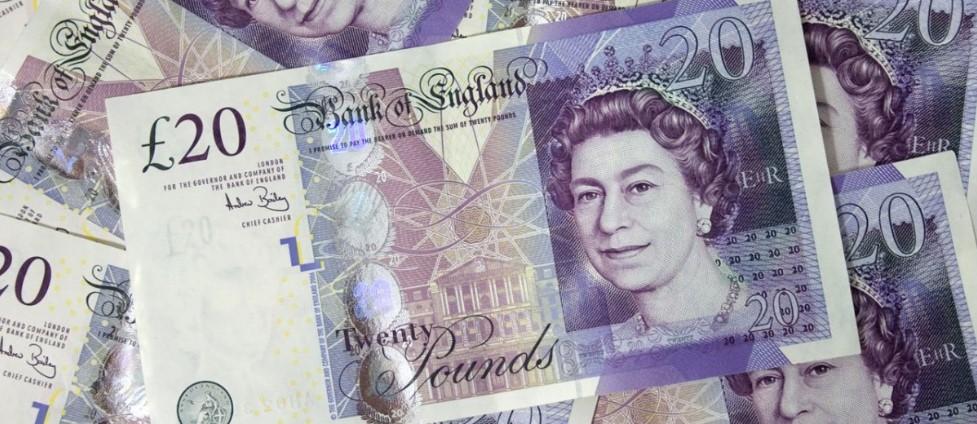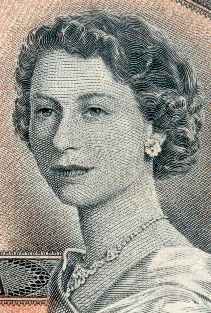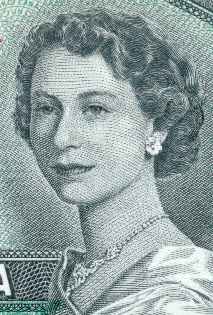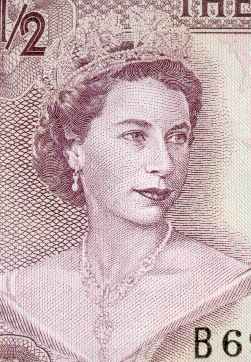QEII 2nd Installment


Photographer: Dorothy Wilding
This bas-relief profile of The Queen, wearing the George IV State Diadem and surrounded by Hakea leaves, is used on the Australian 1-pound note that was initially issued in October 1953. The note was designed by the Note Printing Branch of the Commonwealth Bank of Australia (which was Australia's note-issuing authority in 1953), with assistance from the artist Napier Waller and the sculptor Leslie Bowles. The plaster image for the portrait of the Queen was sculptured by Mr Bowles from a photograph by Dorothy Wilding.
Use of this Portrait:
Australia P-30 and 34

Photographer: Yousuf Karsh Engraver: George Gundersen
This portrait of Queen Elizabeth is based on a photograph by Canadian photographer Yousuf Karsh. The photograph was one of many taken during a photographic session in 1951, a year before Queen Elizabeth's accession to the throne. Many of the portraits from the photographic session show The Queen wearing a tiara, and the portrait chosen for the banknote originally had the tiara. The necklace worn by The Queen in this portrait, of diamond flowers and leaves, was a wedding present from Nizam of Hyderabad and Berar. The image on the banknotes, which is based on Karsh's photograph, was engraved by George Gundersen of the British American Bank Note Company, at which time the tiara was removed and the Queen's hair redrawn. This portrait is famous for its two varieties.
Portrait 6a
The first variety of this engraving incorporates a 'devil's head' in The Queen's hair.
Use of this Portrait: Canada P-66 to 73

Photographer: Yousuf Karsh Engraver: George Gundersen
This portrait of Queen Elizabeth is based on a photograph by Canadian photographer Yousuf Karsh. The photograph was one of many taken during a photographic session in 1951, a year before Queen Elizabeth's accession to the throne. Many of the portraits from the photographic session show The Queen wearing a tiara, and the portrait chosen for the banknote originally had the tiara. The necklace worn by The Queen in this portrait, of diamond flowers and leaves, was a wedding present from Nizam of Hyderabad and Berar. The image on the banknotes, which is based on Karsh's photograph, was engraved by George Gundersen of the British American Bank Note Company, at which time the tiara was removed and the Queen's hair redrawn. This portrait is famous for its two varieties.

Photographer: Dorothy Wilding
This profile of The Queen might be regarded as a portrait specifically prepared for use on coins, which traditionally show the profile of the monarch. However, the issuing authorities that chose to use this portrait had previously used a design which included profiles of King George V and King George VI. In order to maintain the Thomas De La Rue designs into the reign of Elizabeth II, it was necessary to have a suitable profile of Her Majesty.
Use of this Portrait: Seychelles P-.11 to 13
Falkland Islands P-.7 to 11

Photographer: Dorothy Wilding
Portrait 8a
This portrait shows Her Majesty with bare shoulders and a deep neckline on the notes of Jamaica and The Bahamas, but on the notes of the East African Currency Board, her shoulders and neckline are not apparent. The notes of Jamaica and The Bahamas depict Her Majesty in her most feminine aspect. In these portraits, she is a woman first and Queen second. However, the beauty of Her Majesty in these images has been enhanced by the engraver. The original portrait, while very flattering, represents Her Majesty in a more regal aspect and with, perhaps, less distinct facial features.
Use of this Portrait: East African Currency Board P-37 to 49
Jamaica P-48
Bahamas P-17 to 41

This portrait was used on The Royal Bank of Scotland's five-pound note, issued to commemorate Her Majesty's Golden Jubilee in 2002. The adaptation of the image on the commemorative note is not as pleasing as the image on the earlier notes, and the later engraving could be mistaken as being copied from a completely different portrait. It is certainly a very different variety of the portrait.
Use of this Portrait: Royal Bank of Scotland - Commemorative 5-pound note

Date of Original Portrait: 1955
Artist: Pietro Annigoni
Portrait 9a
This is the Bradbury Wilkinson version of the portrait. The distinguishing features of this portrait are the even shading on the side of The Queen's face, below her temple, and the distinct highlights given to the braid on the front of her cloak, which originates from the bow on her left shoulder.
Use of this Portrait: Isle of Man P-24 to 27
Malta P-25 to 30
Rhodesia P-24 to 29
Seychelles P-14 to 18
Trinidad and Tobago P-26 to 29
Seychelles P-14 to 18

Portrait 9b
This is the De La Rue version of the portrait. In this version, the darker shading on the side of The Queen's face below her temple has a distinct edge, highlighting her cheekbone. In addition, the braid on her cloak is drawn more simply and regularly.
Use of this Portrait: Jersey P-7 to 10
East Caribbean States P-13 to 16
Mauritius P-30 to 33
Fiji P-50 to 67
